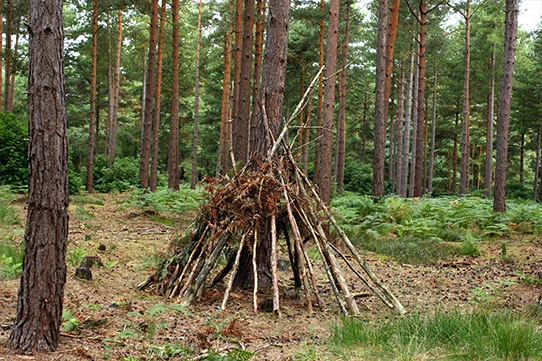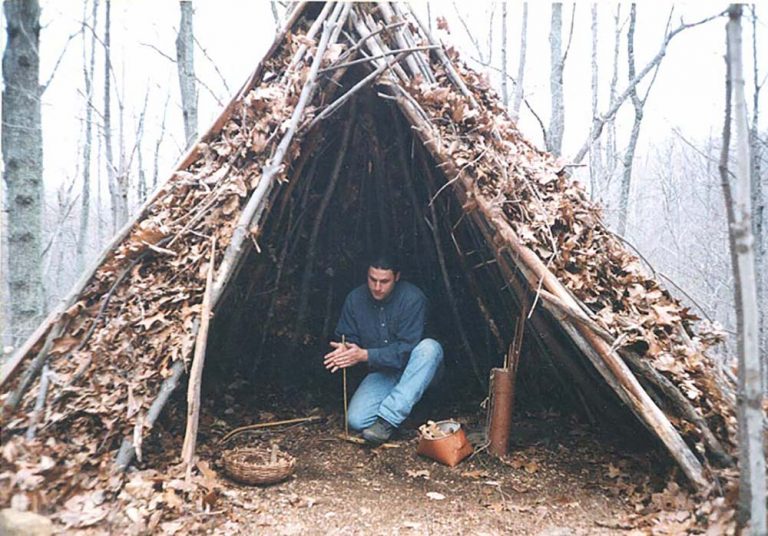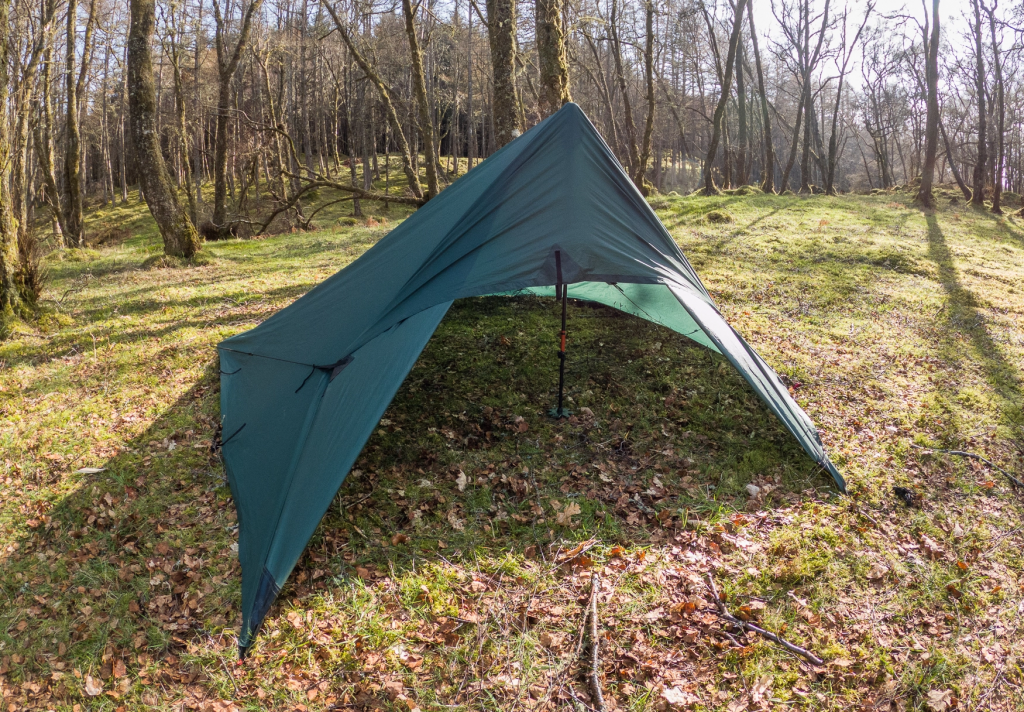Shelter Building
Whether you are making a quick survival shelter, something long term, or a place to store supplies all you need is some wood, ropes, and tools from your Bushcraft kit to be on your way.
A-Frames
A-Frames are very simple shelters that have an open triangle shape on either one end or both ends. These make use of a main central ridge pole with smaller ribs coming off of the ridge pole. Layers are added across the ribs of progressively smaller sticks. If possible add large leaves, pine boughs, or patches of moss to make your shelter more water resistant.




Wickiups


Lean-Tos
Lean-Tos are simple structures that are one sided. Typically the fastest style to set up, but they are mostly useful as a windbreak, shield you from rain, or provide you with shelter from the sun.

Longer Term Shelters
A quick survival shelter can be very important, but sometimes you have a private place that you frequent just for getaways. In these situations you might want to make something fancier to enjoy over your extended stays.

Tarp Shelters
The use of a tarp, some rope, and a few wood stakes you can quickly make yourself is all you need for an ultra quick shelter.





Shelter Tips


